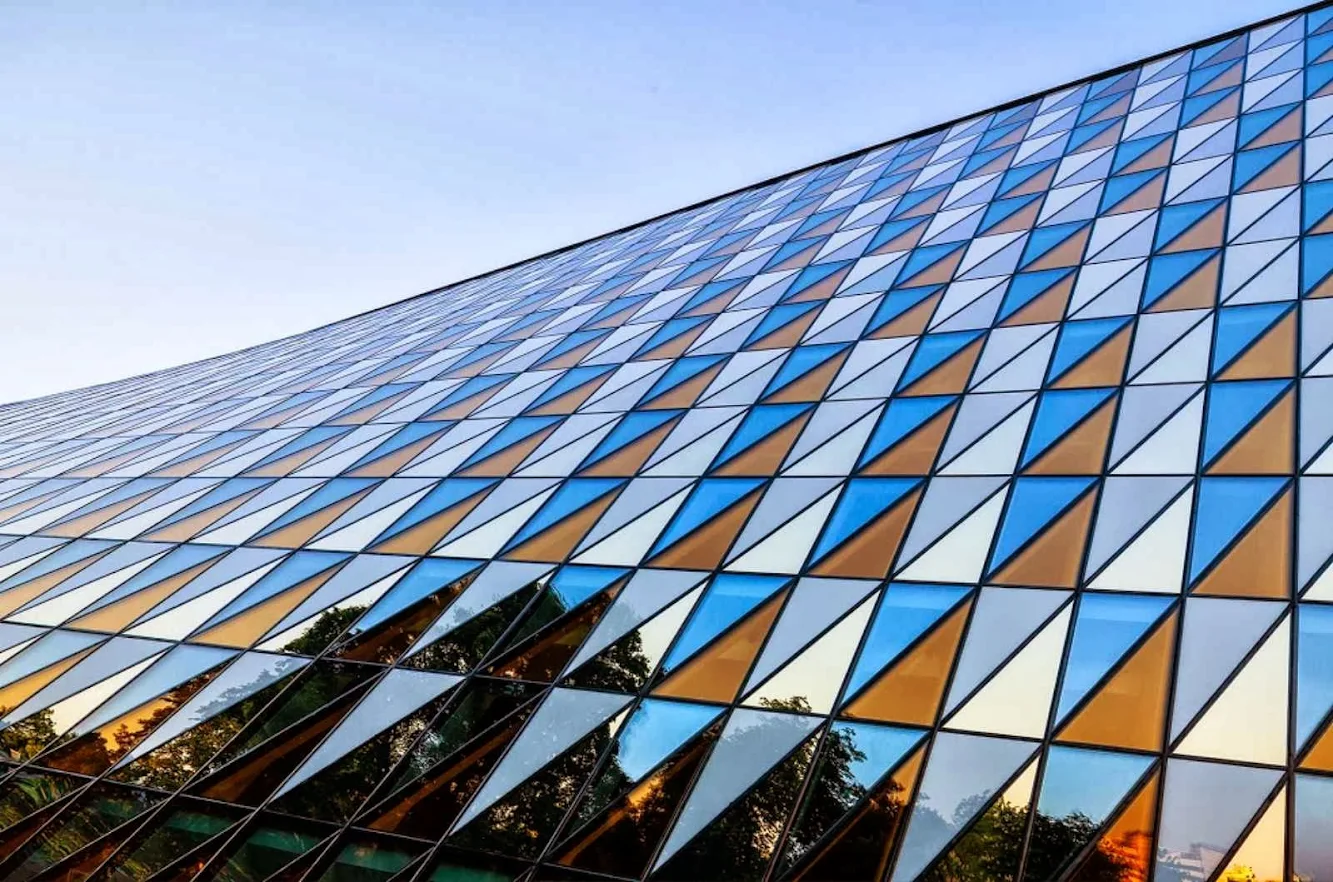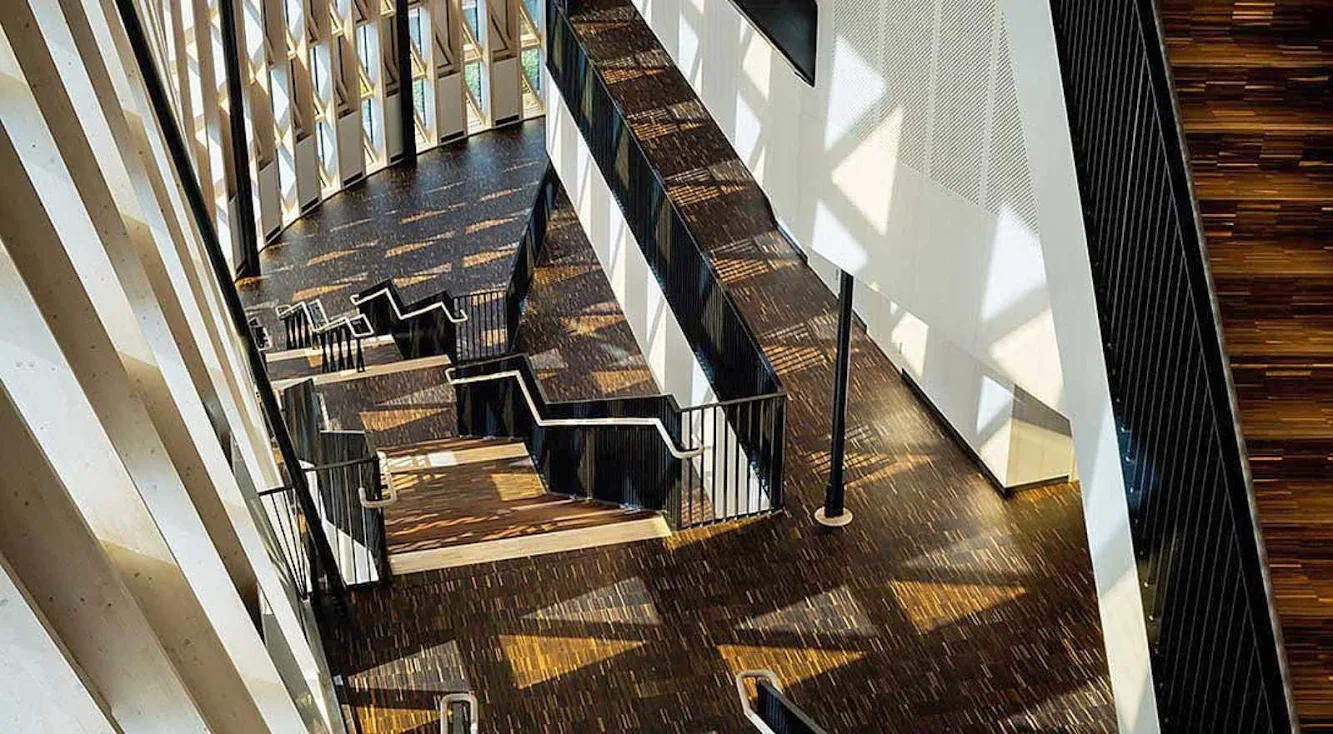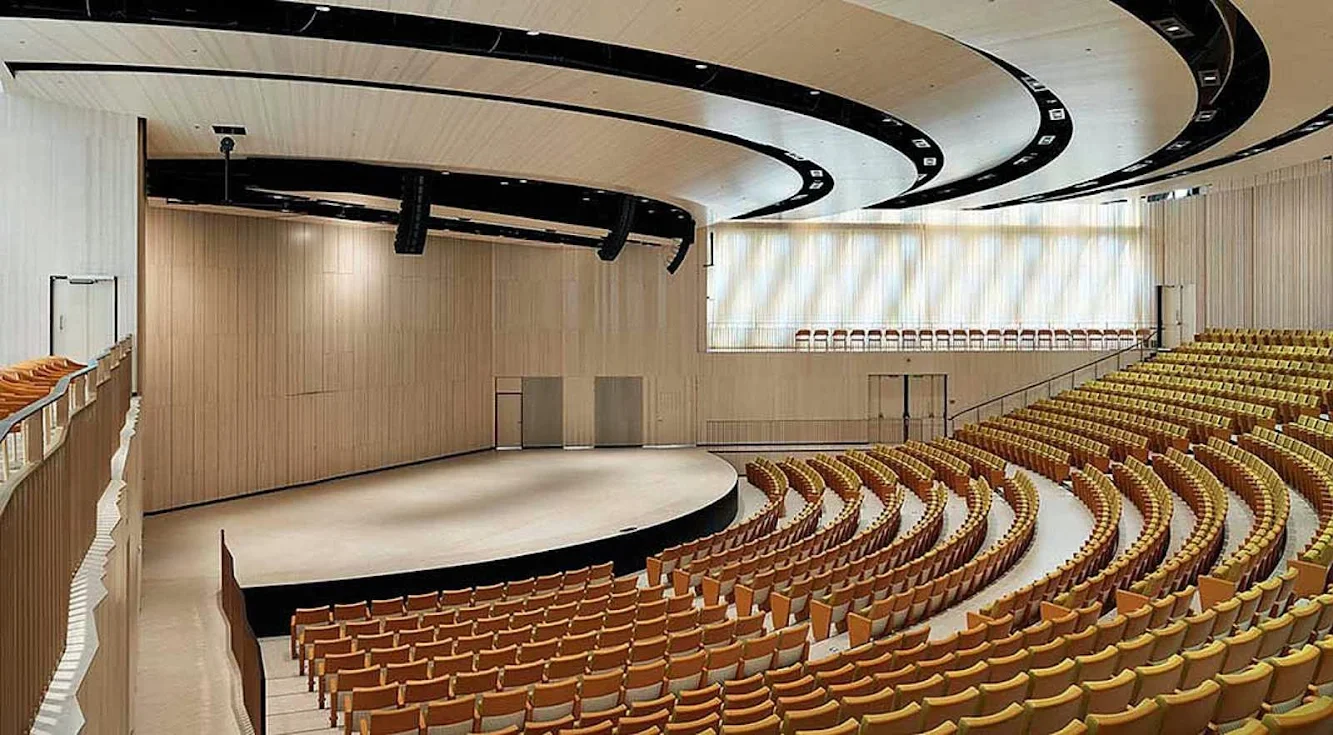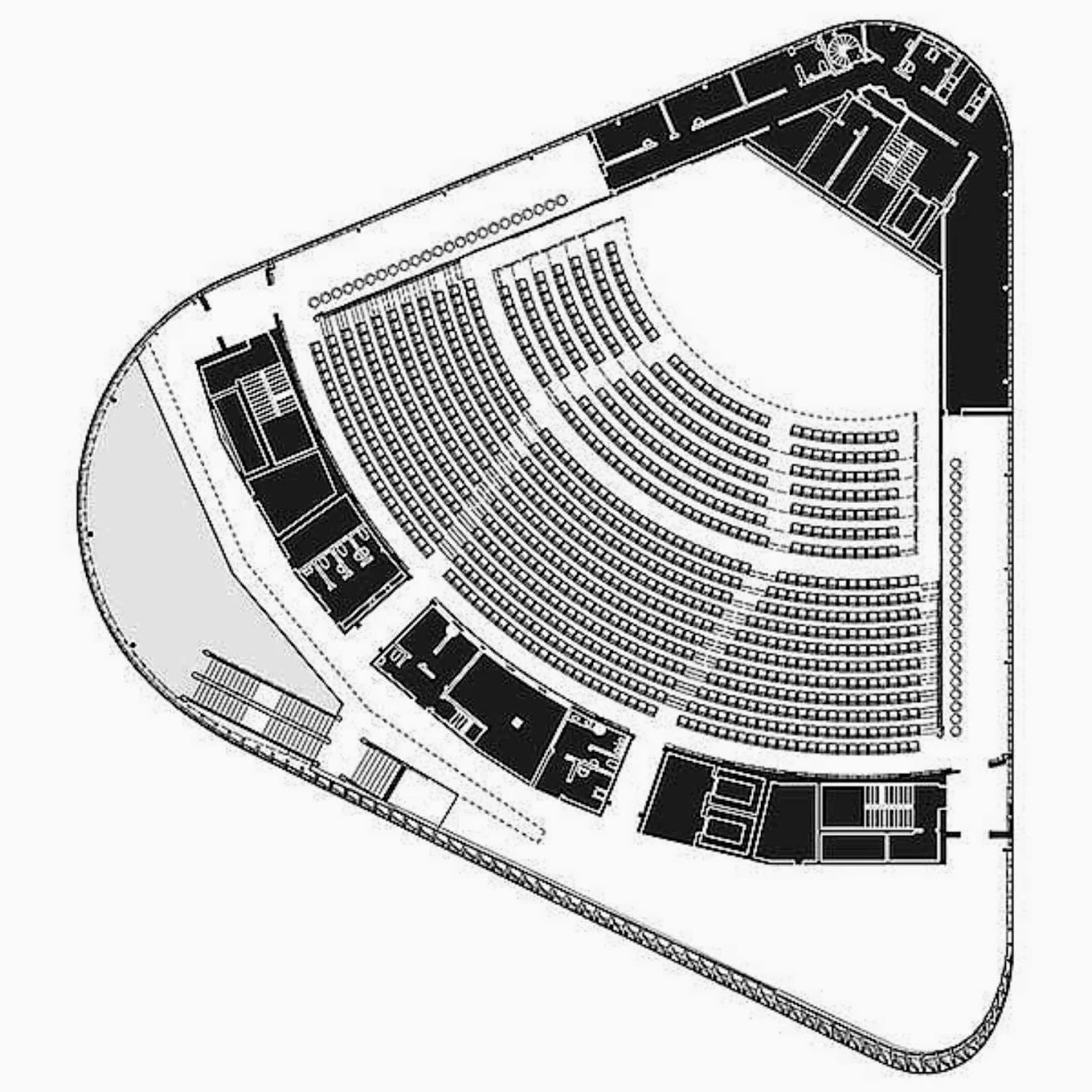
The abstract building cladded in six different types of glass stands like a bowl at the core of medical university Karolinska Institutet in Sweden.

It's been baptized as Hagastaden and includes the gigantic New Karolinska University Hospital designed by White and Tengbom Architects as well as the yet completed twin towers Tors Torn by Oma.

These two skyscrapers will become the third tallest buildings in Sweden. Wingårdh has designed the building, the form and geometry of which contrasts with the traditional low-rise brick buildings on the campus.

Aula Medica was completed in the summer of 2013 and houses a 1,000-seat auditorium, office space for 90 staff, 100 conference seats, two restaurants and a café.

As Karolinska Institutet selects the Nobel Prize laureates in medicine or physiology, there has been a demand for a large venue for their lectures.

With its 1,000-seat auditorium, Karolinska Institutet 's new lecture hall complex, Aula Medica, enables the university to arrange major public events, such as the Nobel lectures, which attract audiences from around the world.

This iconic jewel formed in gold and black glass hosts the new lecture hall, classrooms and offices for the university community. It also hosts one of the most impressive over vert leaning facades in Europe.

The façade of glass on a glulam structure is wrapped around the building that leans heavily over the highway, announcing the presence of research and education in the cities of Stockholm and Solna.

An environmental programme has been produced to ensure a green build. Highly energy-efficient solutions have been devised following investigations into choices of system.

For example, the carcass of the building comprises triangular elements that form an airtight, energy-lean façade.












Location: Stockholm, Sweden Architect: Wingårdh Architects General contractor: Ncc Construction Premises space: 10,000 sq. m Commencement: September 2010 Completion: June 2013 Client: Akademiska Hus Photo: Ulf Sirborn, Ola Fogelström